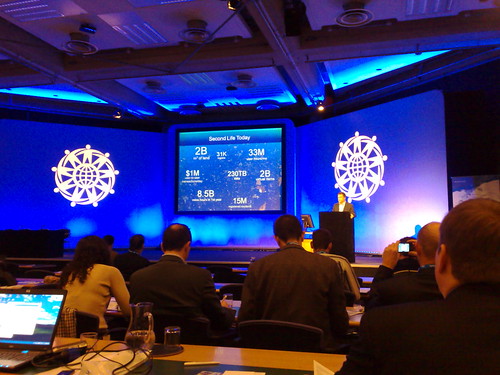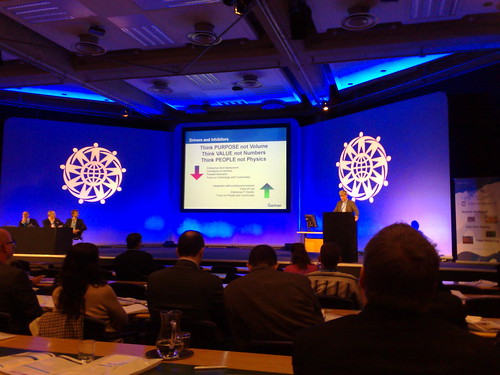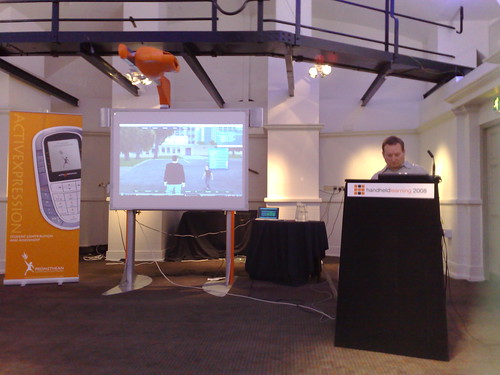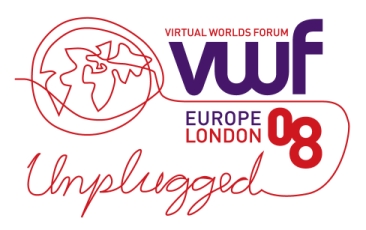I have been completely blown away by listening to the audiobook version of Seth Godin’s new Tribes book. (Thanks to @ids for shining the light on this one for me)
Why? Well Seth articulates not what we should have done as our Eightbar tribe, but what we actually did. Every line had me nodding in agreement. He has saved me the bother to write the story of eightbar and how our particular tribe formed in and around virtual worlds as he has documented what has happened and can happen when anyone, anywhere steps up to lead people with something they believe in.
It may occasionally come across as a bit of a self help book, slightly American in its apparent dream, but as one of the many heretics he refers to who has used many of the channels, techniques and ideas to get things done and to help form a tribe it is completely true.

Seth talks about overcoming the fear that very often holds back people when they consider any form of change. Whilst written pre-credit crisis he referes to a previous crash, when half the people in particular real estate conference we full of doom and gloom and the other half, the mavericks, entrepreneurs and heretics saw the opporunity to rise form the ashes and make something happen.
He also points out (as I do) that there is nothing stopping anyone sharing their idea, creating their tribe, starting there movement right now, this instant. The gathering of people around a cause can happen at the push of a button on a blog post, NOT after you have been through some validation process by a mythical board of good ideas giving you the thumbs up.
I had to enter quite a self reflective mood when the book discusses the role of a leader, trying to keep the ego and self interest in check and doing things for the right reason. He suggests people lead not have statues made of them, but to do things that are worthy of a statue. A subtle difference. People who set out to rule, for self gain are sniffed out quickly by human intuition. Being able to use notoriety and public awareness for the good of the whole tribe is important. Not seeking fame but knowing how to use it. (That all sounds quite pompous but it is something that many of us feel I think).
The book also talks about the death of the factory, of old corporate structures based purely on time served and geography. Anyone who has heard me speak knows thats a pet subject for me. Not to destroy the corporate structure but to improve it, though that requires some bypassing.
It is the techniques many of us instinctively use that Seth refers to in the book, using the analogy of faith and religion. Not for any discussion of god per se. Faith is the belief in something, anything, an idea, a direction, a product, a group of people. Religion is often the rules and rituals that re-enforce that faith. He refers then to corporate religion, this is the way it has always been done, here is a process to follow and how that can then get in the way. Herectics have faith, they may appear to follow the rules, but in reality they are working for something to replace those rules with a better approach, and not leave things netrenched in “well its always worked that way”.
In some ways he is letting the cat out of the bag, but to keep the animal analogy he refers to many people in life who turn up for a paycheck and fear any change. He calls those people Sheepwalkers. Its a brilliant term and one that is now in my lexicon. It is not wrong to be a sheepwalker, but that is not fulfulling any human potential. He constantly throws in the question “how was your day?”. Aiming to help people understand that driving and leading change, working for a cause you believe in for a tribe of people that care about one another is way more rewarding than anything else.
Seth Godin is a marketeer, he is trying to help those in marketing understand that massive ads, swamping people with “messages” is not longer going to work. People choosing to follow something or someone, gathering together across the web, twitter, virtual worlds etc means is far more powerful and profitable than the “old way” in the long run. He makes an important point that if you are expecting the next thing to be better than the current thing on a 1:1 comparison then you will be missing the point. The next thing will evolve to be far better, the comparisons will not be valid and if you wait for the perfection of the next thing you will be too late.
This reminded me of the example of the visits to Second Life Wimbledon in 2007. When measured on web scale the visits were tiny, 200 people a day. as opposed to the millions to the website. Yet all those people were engaged with and talked to, bonds were formed. It exceeded the 50 people a day who visited as customers at the real venue, each of those is engaged with and talked to. Comparing, or demanding the right measurements and facts in place before doing anything does not work. I guess thats where faith comes in, an utter deep belief this is the right way forward.
So eightbar is a 6,000 person tribe made up of IBMers who are able to communicate and connect with one another. It has a feel, it has a reason to exist to explore to push the boundaries. It has also formed several different spin off tribes. The virtual universe community, with its charter, its guild leaders inside IBM, and it has caused the formation of the Emerging Business Unit for virtual worlds and digital convergence in a more traditional corporate structure. It also, as a tribe has people with an affinity to it, the people who are kindred spirits and fellow heretics pushing these ideas forward.
I am immensely proud of our tribe, what we have done and everyone in and around it. It is woven deeply into my life and history, and thats why seeing the very thing we are explained with other examples has given my faith a massive re-injection and validation.
We all rock!







